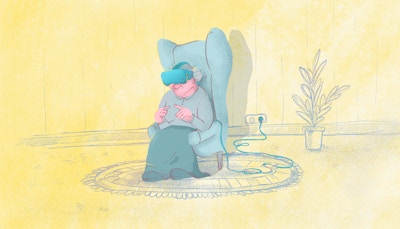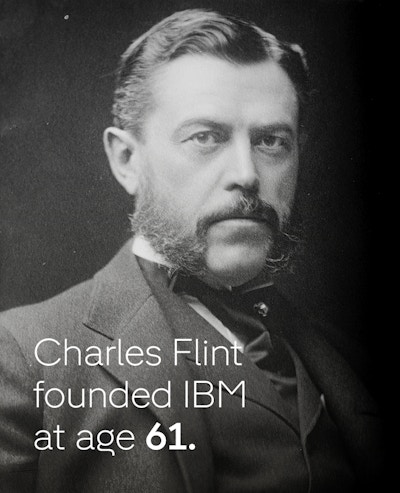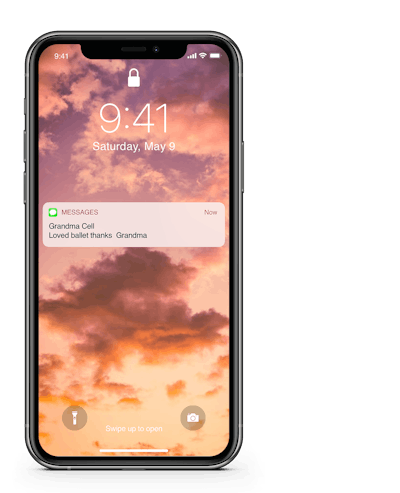Ageism, exposed. How can design help?
How has the coronavirus heightened ageism, and how has it reestablished the walls that had begun to crumble between generations?

By Eden Dotan
In the distant pre-corona era, Maye Musk was appointed the face of Covergirl, Allure banned the term ‘anti-aging’, and at the ripe age of 56, Jeff Bezos ruled the world. Old was bold!
But the coronavirus reintroduced us to a different reality. Nations around the world have shown difficulty in prioritizing the health of the elderly over the health of the economy, and ‘Boomer Remover’ has become everything from a trending hashtag to a Spotify playlist.
These uncertain times have brought to the surface what was long hiding underneath it. In the same way the pandemic has accelerated trends like digital transformation or remote learning, it has brought to life a once subtler form of prejudice. The coronavirus hasn’t created ageism, it has better exposed it.
How does ageism hurt our communities collectively? How have designers exacerbated ageism, and how can we begin to heal the wound?
The greatest evil of ageism is the erasure of purpose.
'Over the past century, we’ve created the greatest gift in the history of humanity — thirty extra years of life — and we don’t know what to do with it!' — Joseph Coughlin, Founder of AgeLab
Our predecessors rarely lived into ‘old age’. Those who made it far enough were granted the penultimate role — guardians of tradition, leaders of the pack. Today the elderly are neither expected, nor given the opportunity, to matter.
We are an aging population desperately clinging to our youth; we worship the shrine of the young entrepreneur and a narrative of rapid change. To remain relevant, older people cling to youth rather than — God forbid — accept old age. Those who continue to influence are inspiring exceptions to the rule.
Lifetimes and ability are lengthened, but roles and responsibilities are cut short. COVID-19 serves as a stark reminder: While the young are tasked with reinvention, the old are given just one role: stay alive.
Ageism is bad for business.
The number of Americans over 65 is projected to nearly double from 52 million in 2018 and to 95 million by 2060. They will constitute a fourth of the population.¹
Households headed by those over 65 are fifty times as wealthy as those under 36.² And yet this demographic attracts just 10% of marketing budgets and less than 1% of global innovation.³ Services are designed with digital natives in mind. International data collected by governments, UN agencies, and NGOs — including metrics on health, employment, assets, and domestic violence — stops abruptly at age 49.⁴ Not only are we failing to create for older people, but we are also failing to even account for them.
This is a poor business decision. Brands that jump on the bandwagon too late risk missed opportunities and tarnished reputations.
Ageism hinders creativity.
Mark Zuckerberg was only 19 when he founded Facebook, Larry Page and Sergey Brin 25 when they founded Google. The young entrepreneur, champion of the ‘move fast and break things’ mindset, has dominated the innovation narrative for years.
As usual, our perceptions are skewed. In 2017, the 55–64 age group accounted for 26% of new entrepreneurs throughout the world, an increase from 15% in 1996.⁵
A recent study by Ohio State University examining 31 Nobel Prize winners highlighted a distinction between two kinds of creatives. Conceptual innovators, such as Picasso and Einstein, who think out of the box and challenge conventional wisdom, versus experimental innovators, such as Darwin, who build on accumulated knowledge. The latter produce their most creative work beyond ‘middle age’.⁶
As the culture of diversity and inclusion of thought grows, why are we leaving our older colleagues out of the mix? Wouldn’t a balance between radical and experienced thought pave a better path for the Adam Neumanns of the world?

Photo: United States Library of Congress

Photo: Schlesinger Library, Radcliffe Institute, Harvard University

Photo: Cup Noodles Museum
Ageism begets ageism
Worst of all, misperceptions affect reality. Tell someone they are too old to understand enough times, and eventually, they’ll believe it. Bar someone from the opportunity to learn something new, and eventually, they’ll be far enough out of the loop to keep up.
In a series of interviews that we conducted with men and women over 70, our most blaring discovery was that ‘being old’ has nothing to do with age, but rather, with the end of movement or creation. The moment you stop learning, teaching, running, dancing is the moment you officially accept old age (and with this moment comes depression, and both mental and physical deterioration).
By shutting people out of the workforce after 67, by limiting the tech bubble to a 30s-and-under affair, by laughing when our parents on Zoom fumble rather than helping them do it properly, we are shutting them out of a world of growth and opportunity — hurting their overall quality of life and denying them the chance to defy our misled assumptions.
The coronavirus has proven that older people are ready and able to adopt the latest tools. They are signing up for Netflix, hanging out with friends on Zoom and ordering meals from their smartphones. Perhaps we can move beyond the pandemic with a more inclusive approach, and ask ourselves how to include them in technological and cultural shifts — rather than instinctively dismissing them.

On a side note: My awesome 92-year-old grandma quarantined alone for over three months. I sent her a YouTube video of a ballet performance – she's had season tickets to the ballet since she was first able to afford them – and while she's never been one for technology, she's making it work. If she can do it, we really all can.
How has design contributed — and how can we improve?
As designers, we’ve played a crucial role in exacerbating ageism. The cultural conversation is one of the driving factors behind our processes; it is part of what makes our work relevant and desirable. When culture screams millennials and under, this, too, becomes a force that shapes our work.
Ageism will never disappear. But there are changes we can begin to incorporate into our ways of working that will introduce us to a more diverse representation of voices and ideas, and lead us to a more inclusive, broader-reaching design.
Inclusive research
As designers, we’ve played a crucial role in exacerbating ageism. The cultural conversation is one of the driving factors behind our processes; it is part of what makes our work relevant and desirable. When culture screams millennials and under, this, too, becomes a force that shapes our work.
Ageism will never disappear. But there are changes we can begin to incorporate into our ways of working that will introduce us to a more diverse representation of voices and ideas, and lead us to a more inclusive, broader-reaching design.
Inclusive research
Whether it’s because of a client’s request or our own shortsightedness, as designers we rarely get the perspective of old people; at best, they are a small percentage of our respondents there to prove sound research methods. Putting aside services specifically targeted at young audiences, let’s change that.
Many of the services we know and love today are attributed to a younger crowd but increasingly adopted by older users. Over 60% of adults over 50 regularly use streaming services.⁷ Guests over 60 are the fastest-growing age group using Airbnb.⁸ Yet these services fail to take into account the needs or desires of an older age group. By challenging our research methods, we could begin to change this.
What if Netflix had a Senior genre, alongside the existing Kids and Teens genre? (Couldn't we all do with a little less teen angst?)
What if Airbnb offered a search filter for properties in quiet locations or rentals within a walking distance from basic amenities?
Inclusive design principles
We are not all digital natives, a hamburger is not a universal sign for a menu, and only a born iPhone user could possibly know which swipes and taps do what, let alone someone over seventy learning the ropes of the digital world.
We can design for simplicity and seamlessness, while enabling older people to benefit just the same as the rest of us — designing for discoverability of actions, consistency of operations, and forgiveness for mistakes.
What if FaceTime incorporated a quick onboarding about how and where to place a device for the optimal video image?
What if Wolt had an undo button for mistakes? (Wouldn’t that be great for us all?)
Inclusive hiring
Little explanation required. If we want to best design for older people, they need to be a part of our thought processes.
'We’ve already extended life! What we need is not to put off death a little longer but to write a new narrative of aging as it could be.' — Joseph Coughlin, Founder of AgeLab